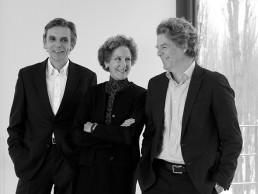
Sauerbruch Hutton
At the latest iGuzzini LightOn lecture Louisa Hutton described Sauerbruch Hutton’s functional approach to architecture and its teamwork philosophy regarding the firm as a family. Henrietta Lynch profiles the international architectural practice and its use of daylight and colour in its projects.
Sauerbruch Hutton’s office, located in central Berlin not far away from Hauptbahnhof, originally developed as a German/British partnership between Matthias Sauerbruch and Louisa Hutton in London in 1989. The firm now includes a third Partner, the Argentinian Juan Lucas Young, four associate directors and a mixed discipline workforce of about 100 staff in total. This is an international office with over 25 different nationalities employed and English spoken as one of the main languages. They admit to enjoying the dialogue that this diversity brings to their design culture. Their projects, like the office, are also diverse and located across Europe and range from bank headquarters and government buildings to arts, religious and cultural developments and private residencies.
Sauerbruch Hutton is well known for its skilled use of light and colour as an integral part of the façade and overall design of many of its buildings. Landmark projects such as the KfW (Kreditanstalt für Wiederaufbau) building in Frankfurt am Main, is distinguished with its use of different colour schemes for each aspect of the building exterior.
Likewise the GSW (Gemeinnützige Siedlungs und Wohnungsbau Gesellschaft mbH) headquarters building in Berlin, which was completed in 1999, made an innovative statement and challenged the planning status quo in the city during the immediate post wall or post ‘Mauer’ redevelopment years, with its modernist inspired form, progressive environmental design criteria and striking coloured west façade.
David Wegener, one of the associates at Sauerbruch Hutton, explained that working with light forms a main part of their design palette, helping to produce an architecture that is both functional and beautiful. This is apparent in the sublime roof-lit spaces on the top floor of their own offices. The practice works with light as a design medium to help create sophisticated façade interfaces that often employ several layers of colour, shading, glass design and patterns to manipulate the building’s internal and external environments. Desired design results are achieved through the production of studies that generally include an examination of the building’s direct physical context and surroundings. These studies can, for example, review local weather patterns, the existing cityscape, local planting and vegetation, historic references and works of art to inform final design decisions. Taking all these elements into consideration can create a degree of complexity that may require designs to be tailored towards more simple and robust final solutions which can accommodate all these varied inputs.
Understanding the local context and weather conditions for a building design helps to direct design choices that affect the way a building operates, but also the way in which it is perceived. Working with colour creates a special design element that will slightly change in response to different light qualities and conditions throughout the seasons.
In the case of the KfW building in Frankfurt, the blue part of the façade is inspired by the neighbouring 1960’s office building. The red colour of the façade draws references from stone and brick used within the traditional built infrastructure in the city of Frankfurt, and the green colour forms a discrete backdrop to the adjacent Palmgarten Park.
Wegener describes the use of colour in the façade design as being like dressing a house. “The colour becomes a material acting simultaneously as image and sculpture, ornament and text, allowing the complex technical reality of a building to disappear behind a powerful aesthetic experience.”
Sauerbruch Hutton do not however consider the use of façade colour as a company ID. Instead, they see it as a tool that can be employed as one part of the design concept bringing additional meaning to the architecture. This meaning may be extended via the use of subtle and intricate patterning used as part of the glazing design for specific projects. This can function to control daylight and solar transmission levels and provide contextual reference, according to the individual choice of patterns used. Controlled glazing design can also provide a considered passive or active link to the ever changing external environment. It forms part of a building’s overall lighting strategy, working with and filtering changing light levels throughout the day and year.
Two projects that Wegener thinks have been particularly successful but challenging with their natural lighting designs are the Brandhorst Museum in Munich and the Immanuel Church in Cologne. For the Brandhorst Museum Sauerbruch Hutton wanted to maximise the use of natural daylight inside while meeting the highest demands of conservation to protect the objects on display. Specific technologies such as prismatic mirrors and soffit membranes were developed to re-direct and filter the light in the galleries.
The church is lit by two main sources of indirect daylight from opposite directions – a skylight above the altar, and a large translucent window at the rear of the gallery – both subtly illuminating the central nave in a subtle if not spiritual manner.
Wegener comments: “I see designing with light as working with a number of different components of both natural and artificial light with the aim of achieving equilibrium between functional light level requirements, aesthetics, a building’s energy demands and budgetary constraints.”
Despite all these factors being juggled according to the nature of each project, Wegener thinks that budget is particularly important and should be understood at the outset of the design process, since it will dictate the overall choice of building systems and the materials that can viably be used.
Understanding and working through all the different component parts that make up an architectural design is seen by Sauerbruch Hutton as being a process that should ideally be undertaken methodically and with care making sure all building design elements are adequately considered and addressed, and allowing for appropriate quality control.
Sauerbruch Hutton work with a number of different in-house skills, including model makers, façade specialists, product designers and cost surveyors which they believe enables them to deliver more fluid and developed designs. They also work with many external consultants including lighting designers and engineers. The choice of lighting designers that they like to work with depends upon the nature of a project, since Wegener thinks that different consultant offices are able to offer different types and levels of expertise.
More often than not, Sauerbruch Hutton chose to work with lighting design partners that they know and have trusted in the past. Wegener names Licht Kunst Licht (such as in the Hager Forum in Obernai) and Arup Lighting (such as in the Brandhorst Museum) as example practices.
“Working with many varied consultants can help to produce interesting and high quality designs,” he states, “but can sometimes lead to problems or gaps in delivery at the interface between the remit of different design disciplines. This can be especially problematic where professional or contractual boundaries are not fully understood. And it tends to increase with more complex projects or fractured design teams.”
During the design production and once a building is complete, Sauerbruch Hutton like to undertake occupant consultation and feedback exercises which can help to inform the design processes and overall designs as they progress. These can eventually enable a building to be better managed but also allow for architectural projects to be better conceived. As far as is possible, Sauerbruch Hutton like to allow for these processes to be included within the initial design contracts so as to ensure that there is enough cost to cover them during all phases of a project’s development, right up until and beyond completion. Experience tells that they can otherwise often be forgotten or neglected.
As Wegener relays: “Light is an integral component of a building’s design and can be translated into even the smallest details such as light fittings, fixtures and luminaires.”
Sauerbruch Hutton often enjoy working with industrial, lighting and product designers to help create these types of details to fit their own brand of architecture. Wegener explains that they see opportunities with the commercial production of such items and would hope for some of these specific lighting products to be brought to market, with the aim of them being separately retailed for other designers, architects and individuals to enjoy.
Importantly, Sauerbruch Hutton understand light as forming part of a palette that can be manipulated to help achieve low energy and environmentally sensitive designs. Over the years, the office has worked to try and push the boundaries of their architecture to make their buildings as ‘green’ as possible. While they admit that this has not always been an easy task, they have often received positive industry and client acclaim for doing so, and would like to continue to develop their expertise in this area in the future.
As a European and International office, Sauerbruch Hutton hope that they will continue to work across different national boundaries and with the high skill levels and cosmopolitan nature of design teams and clients that they have worked with to date. It is their belief that such collaborative working has the potential to achieve exciting results and very special projects.
Pic: Claire Laude



